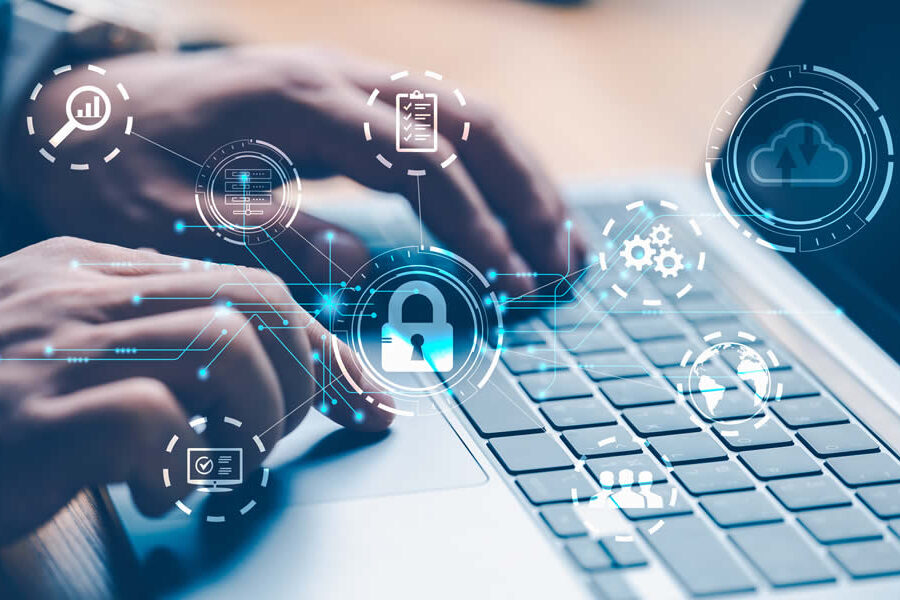Introduction
Digital forensics, also known as cyber forensics, is the process of identifying, preserving, analyzing, and presenting digital evidence in a legally admissible way.
Digital forensics is an area of cybersecurity that focuses on the investigation of cybercrime cases.
To help expose crimes, fraud, and other hostile activities committed by hackers and scammers, this field of forensic science entails retrieving, preserving, examining, and analyzing digital data stored on an electronic device. Digital forensics is useful in a court of law because it offers indisputable proof. Additionally, it gives businesses vital information to stop more cyberattacks.
Based on the area they address; digital forensics are of the following types:
- Network Forensics
- Mobile Device Forensics
- Database Forensics
The Role of Digital Forensics in Cybersecurity
An essential component of identifying and resolving cyber issues is digital forensics. Evidence found during a cybercrime investigation can provide important information for preventing similar incidents in the future and for strengthening the digital infrastructure. It plays a critical role in identifying, looking into, and dealing with cybercrime, making it a crucial asset to an organization’s security.
*Legal Evidence and compliance
In cases of cybercrime, digital forensics provides evidence that can be used in legal proceedings. This includes:
- Ensuring the chain of custody for digital evidence is maintained.
- Adhering to legal standards for Data collection and analysis.
Examples: during the Enron Scandal, digital forensic techniques uncovered email trails and financial records that served as key evidence in court.
*Data Breach Analysis and Recovery
After a data breach, forensic experts analyze the incident to determine:
- Whether the breach was part of a larger attack campaign.
- Steps to recover lost data and strengthen security protocols.
Example: in the aftermath of the Equifax Data Breach (2017), forensic investigations identified that attackers exploited an unpatched vulnerability in a web application framework.
Case example:
- The BTK Killer (Dennis Rader) case (2005)
Case overview: Dennis Rader, known as the BTK (Bind, Torture, Kill) killer, eluded capture for over 30 years.
Role of Digital Forensics: The breakthrough came when Rader sent a floppy disk to the police. Forensic analysis of the disk’s metadata revealed the deleted name of a computer file linked to his church, leading to his arrest.
- The Silk Road Investigation (2013)
Case overview: The Silk Road was an online black market known for illegal drug trafficking. Its founder, Ross Ulbricht (aka “Dread Pirate Roberts”), was arrested in 2013.
Role of digital forensics: investigators used forensic techniques to analyze Ulbricht’s laptop, uncovering chat logs, financial records, and evidence of his involvement in the marketplace. The data was crucial for his conviction.
- Jessica Lal Murder Case (2001)
The murder of model Jessica Lal in 2001 initially resulted in an acquittal due to lack of evidence. However, digital forensics played a crucial role in the retrial, where electronic records and digital evidence led to the conviction of the accused. This case highlighted the importance of digital evidence in the Indian Judicial System.
- BigBasket Data Breach (2020)
In November 2020, the online grocery platform BigBasket suffered a data breach over 20 million users. Digital forensics revealed that the breach resulted from an unsecured SQL file, potentially accessed through SQL injection. The exposed data included personal details such as email Ids, Phone numbers, and addresses. This incident emphasized the need for robust cybersecurity measures in handling user data.
Challenges in Digital Forensics
- Data Volume and Complexity:
Effective analysis is challenging due to the massive amount of data generated every day from smartphones, cloud services, and internet of things devices. The difficulty is further increased by the intricacy of contemporary digital surroundings.
- Encryption and Data Protection Laws:
Legal battles often arise over access to encrypted data. Courts may face challenges in compelling individuals or companies to decrypt information, raising questions about self-incrimination and privacy rights.
- Jurisdictional issues:
Cybercrimes often involve data stored across multiple countries, creating conflicts over which legal system has authority. Different countries have varying data protection laws, making cross-border investigations complex.
- Privacy violations:
Digital forensics can infringe on individuals’ privacy rights, especially when analyzing personal data without proper legal authorization. Balancing investigative needs with privacy protection is a key legal concern.
The Future of Digital Forensics
The future of digital forensics will be shaped by rapid technological advancements and evolving cyber threats. Key trends include the use of AI and machine learning for faster data analysis and blockchain forensics to track cryptocurrency crimes. Real-time monitoring and proactive threat decisions will shift the focus from reactive investigations to ongoing cybersecurity defense.
Legal and ethical challenges, such as data privacy and cross-border jurisdiction, will require updated frameworks. Automation will streamline forensic processes, while stricter data protection laws will demand a balance between investigative needs and privacy rights. As cyber threats grow more sophisticated, digital forensics will continue to evolve, ensuring robust responses to emerging cyber risks.
Conclusion:
Digital forensics is not just a technical tool but a vital component of the legal framework in addressing cybercrimes. Its role in uncovering hidden evidence, supporting legal proceedings, and enhancing cybersecurity measures makes it indispensable in today’s digital world. As technology continues to evolve, the role of digital forensics will become increasingly vital in ensuring data integrity, protecting digital assets, and upholding justice in the face of emerging cyber threats.
contributed by: Arzoo kala (intern )

